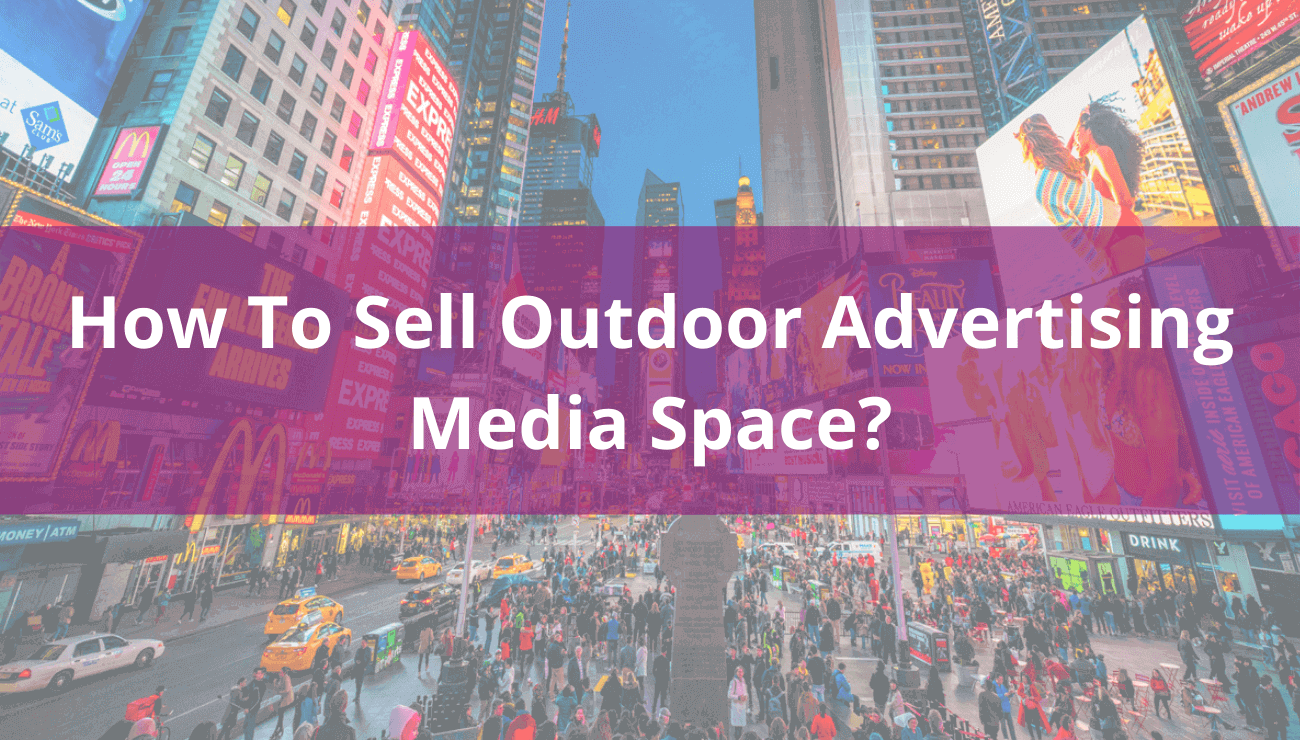How to sell outdoor advertising media space?

When it comes to selling outdoor advertising, it is a different form compared to other types of media such as television radio, and print. Some would say that it can reach further than these other forms. Outdoor advertising is seen every day by millions of people depending on the location. Outdoor advertising is also considered to be out of home advertising, in which the advertisement can attract consumers outside of their home. Outdoor advertising is deemed to be a mass medium; it is more suited to get across broader messages, branding, and support campaigns.
Here are a few tips to keep in mind when selling outdoor advertising to achieve greater success.
1. KnOOH the basics
Brush up on outdoor advertising specs. This is the key when selling ad space to someone who is mildly experienced in the field. You can’t sell something about which you know nothing. If you’re approaching clients who have never invested in Out-of-Home of any kind and have relied solely on other media channels, learn how to bring them into the world of digital outdoor advertising.
If you sell digital advertising on outdoor billboards, you need to know just how those digital ads operate in terms of how you are to receive the creative product, how it reaches the billboard, and what technical requirements a customer must have access to in order to take advantage of this option. The same applies to traditional billboard advertising, you must understand what it takes to get a billboard in place so you can explain it to your customers.
Learn More: A-Z glossary to understand outdoor advertising
2. Understand your prospects business needs
It is absolutely irrelevant if your prospect is a pro who knows what to expect from a well-placed advertisement, or an owner of a new business looking to buy out-of-home advertising space for the first time. The first step on the rocky road to seal the deal is to understand your prospect’s goals and expectations, as well as understanding and showing what you can do to help them achieve them.
Advertising is a different story for each business there is. Approach your prospects as any marketing consultant would. It’s your job to recognize the marketing needs of your prospects and how you can serve them based on their market and target audience. While this is designed to inspire potential clients to sign on, it is also a critical component for ensuring long-term success for your current clients, as you’ll see later on.
Another important need to recognize is the content creation aspect. Depending on their preferences, your potential clients may value the fact that they can use your services to create content more easily.
Must Read: 15 tips to make your outdoor advertising campaign engaging
3. Show proof of success
Whether it’s through your own business story or a third-party case study, show your potential clients what success looks like. If available, use advertisements from a similar context as examples. By pinpointing how someone has used a similar media location and achieved or even surpassed their goals is a massive confidence boost that an ad investment will work out.
It’s even better to have numbers of your own to show how your current clients are reaping the benefits of their investment in your particular ad space and how maybe your guidance played a key role. Data on which target audiences your ad spaces reach is particularly valuable when selling ad space. If you’re just starting out, take note of the future, and highlight the success of each of your clients. In time, you can use the average percentage of return on investment your clients have achieved as a key selling point.
Read Here: how to use the Edge1 mobile app to share proof of performance with prospects?
4. Be conscious of what you can offer
In selling ad space, data is key. There are several questions you should be ready to see directed your way, most of them involving numbers. Questions regarding audience reach, daily/weekly foot traffic, as well as audience segments, are very likely brought up when talking with a potential client. If for whatever reason they don’t, make it a point to raise these questions yourself! They’re excellent selling points as they can demonstrate the reach of your advertising space.
Being conscious of the advantages of certain locations over others is key especially when you have multiple ad spaces on offer. Knowing which location does better for which type of content/audience can ensure greater success for your whole clientele. Not having this knowledge can seriously harm you, as yielding less success with future ad campaigns will result in your clients taking their ad investments elsewhere. It’s never just about sealing the deal. It’s also about retaining your clients. For example, a high-end shoe boutique likely wouldn’t do well to take an open space along a thoroughfare leading to the rural areas of your town. When you sell outdoor advertising space, consider locations for each client. The open space along the rural road out of town might better be matched to the client that sells yard equipment or the local truck dealership.
Know More: how to use the power of location intelligence on outdoor advertising?
5. Discount = more clients
Offer discounted space to contract clients. If a client signs on to purchase outdoor advertising space from you at several pinpoint locations for a 12 or 18-month contract cycle, then offer him a free billboard elsewhere in town. This kind of special perk is what keeps clients coming back to work with you because it shows how much you appreciate their business.
Happy Selling!
To know more
- Email
- Phone+91 (011) 22412700
Subscribe to our newsletter
We understand you’re busy. But you still want to be informed. Join our community of more than 60,000 subscribers to stay up to date with the latest out-of-home media advertising trends and happenings in Edge1.
